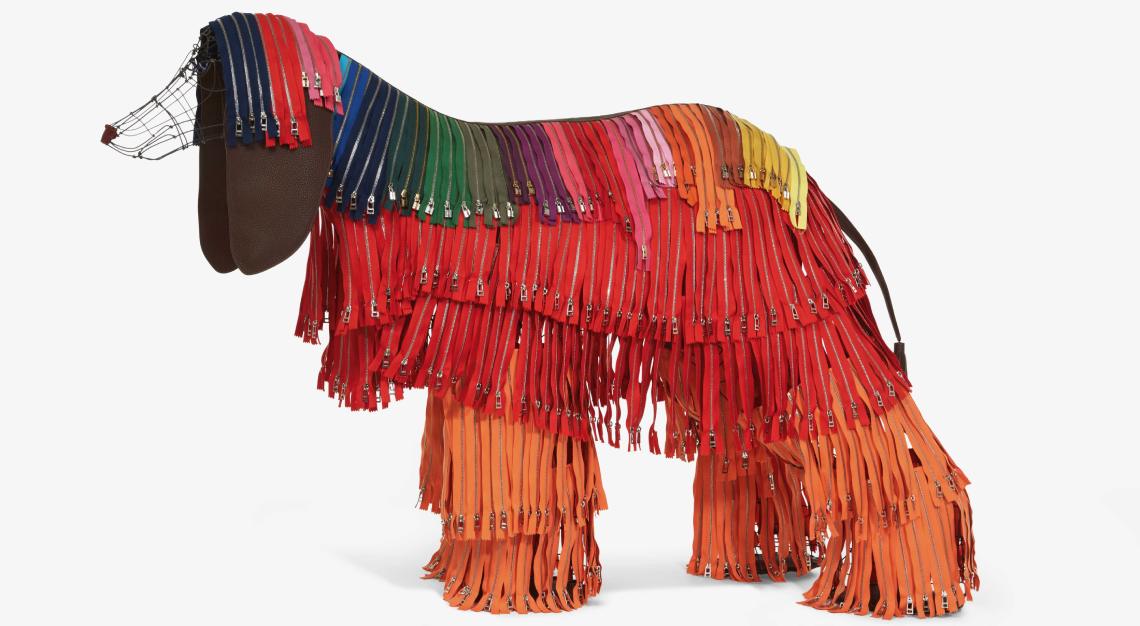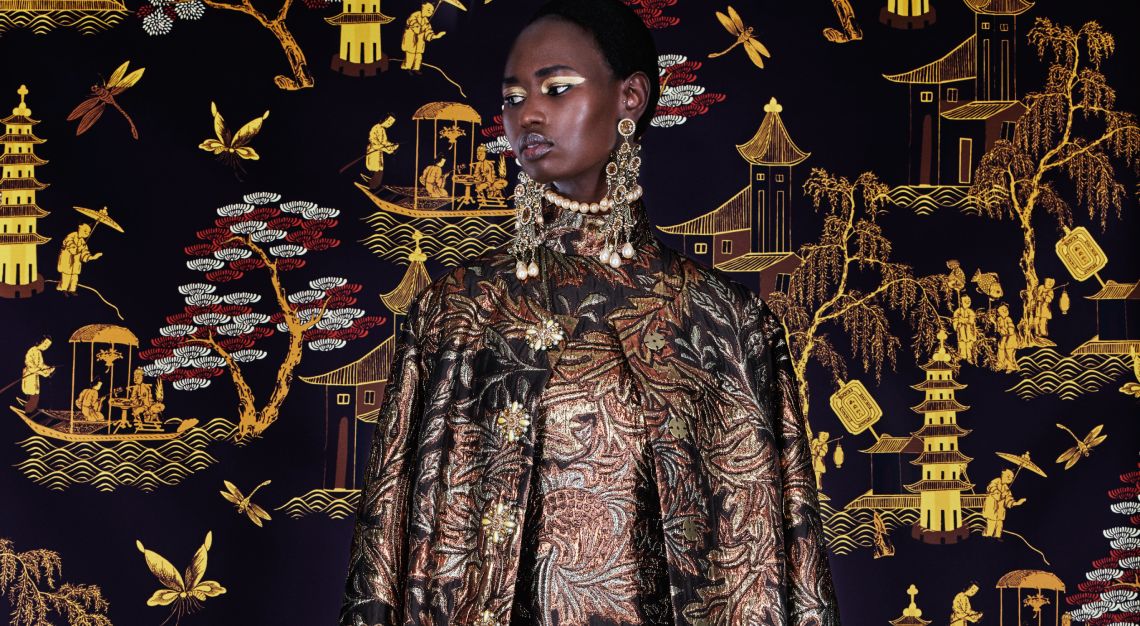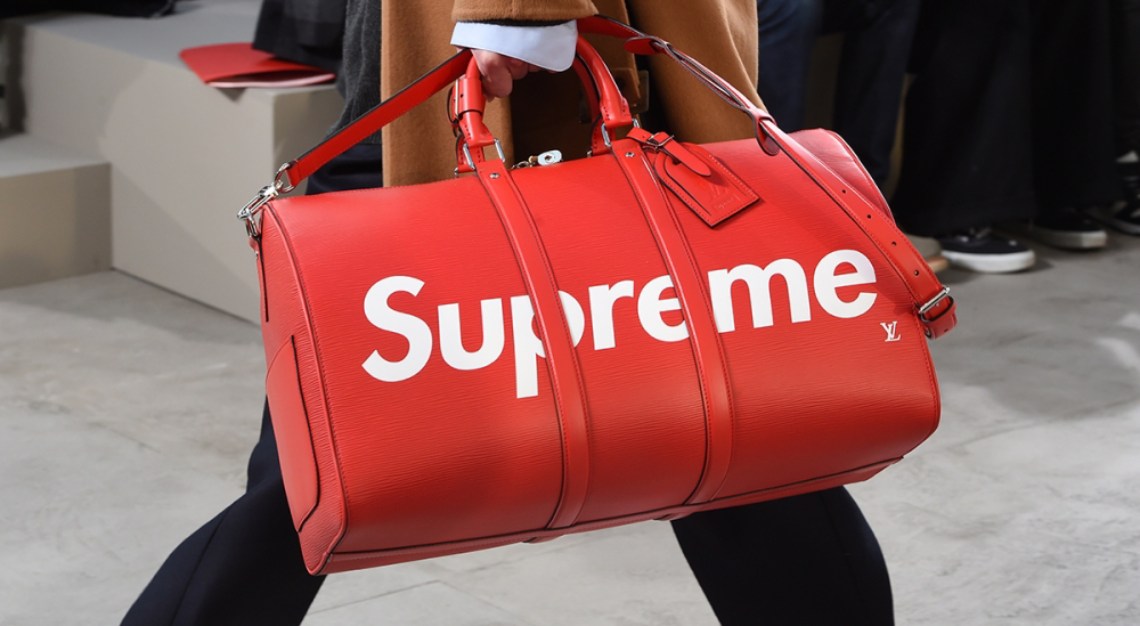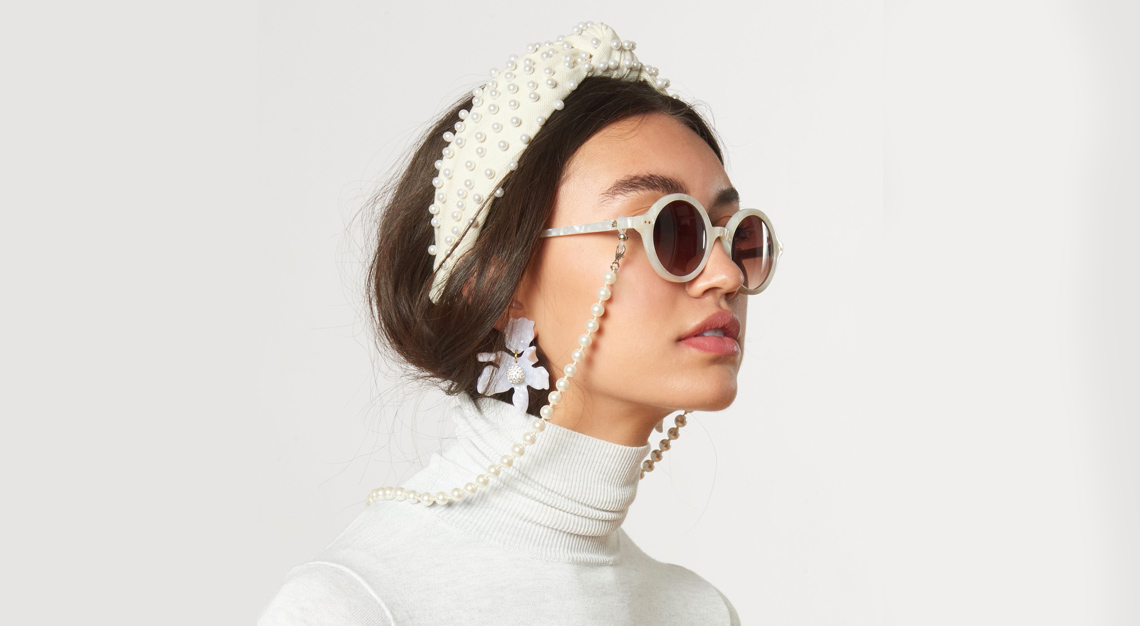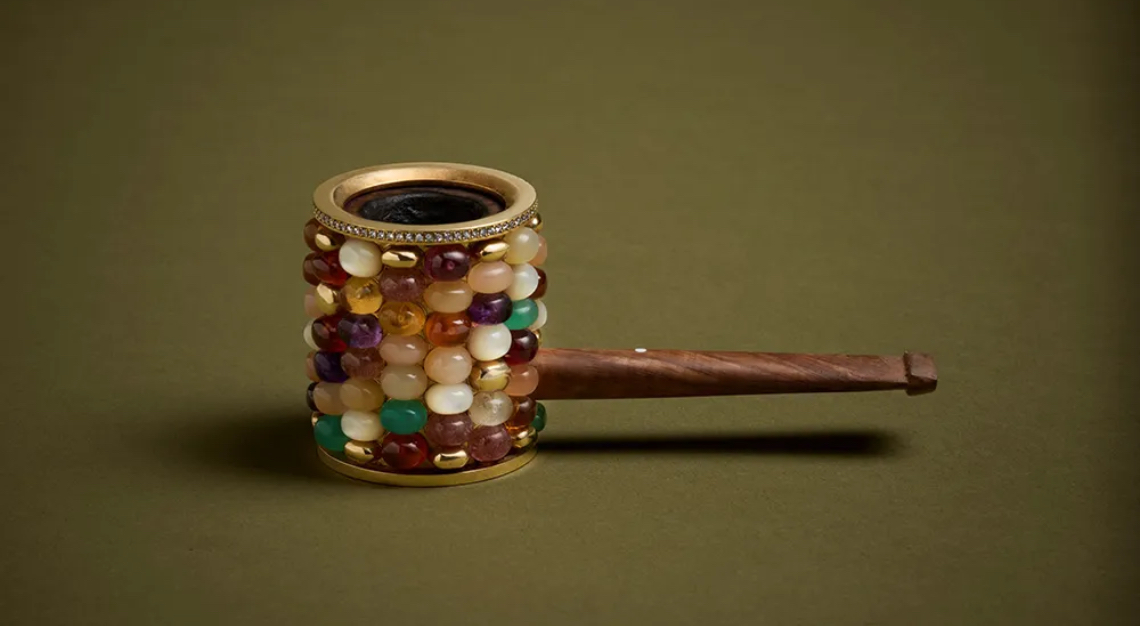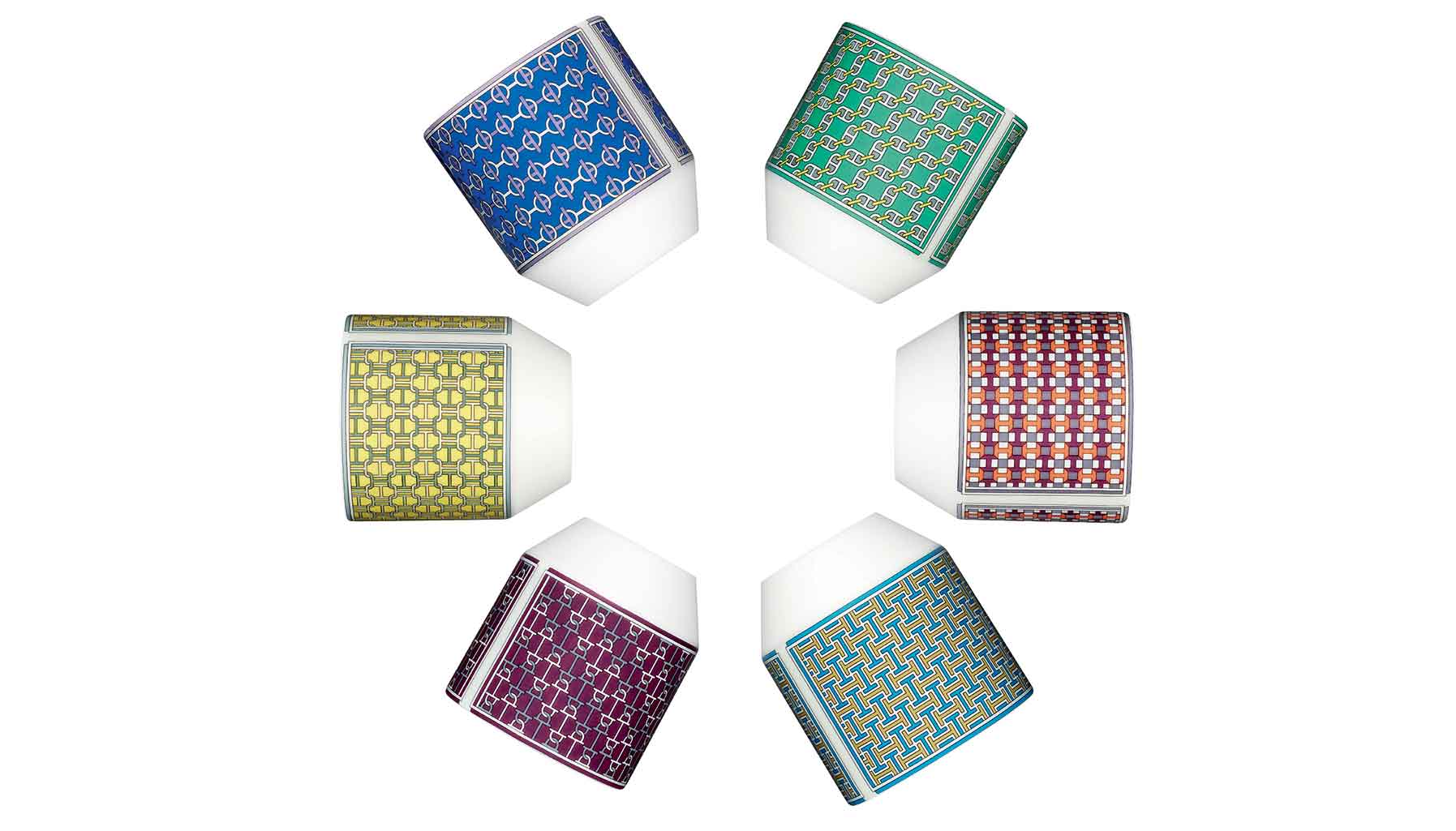It’s been 10 years since its inception and Petit h has grown from strength to strength within the Hermès ecosystem
“This is like Ali Baba’s cave,” I exclaim as I peruse the swathes of rainbow-coloured leathers, fabrics, ceramics and gilded hardware that are shoehorned in every corner of the room. I am inside the Petit h workshop in Pantin, a suburb outside Paris, where Hermès’ design studios are based. There are 30 artisans and designers who work full-time here, a far cry from the two-person team that started the project 10 years ago under the tutelage of Pascale Mussard, the great-great-great-granddaughter of Thierry Hermès.
Today, the workshop is helmed by creative director Godefroy de Virieu, one of the initial designers invited to collaborate with Mussard when the project first took shape.

He explains, “I have a great passion for métiers, savoir faire and artisanship. We met around this common passion. She said to me that she was doing a project close to her heart. She said: ‘I noticed that in all the ateliers I’d visit, there’d be tons of materials that we’d discard or keep aside, and are not used. We need to re-give life and importance to these materials.’
“So she invented Petit h. It was so evident, and like all things simple, it was genius.”
Still, I venture, it must have been challenging to convince the Dumas family (who owns Hermès) of the virtuosity of the project.
“It was instantly accepted,” he says. “Hermès is a story of family. Petit h is the result of a family that pays attention to things. It’s a gesture that’s simple, but logical.”
And it makes sense. Hermès is one of the last family-owned luxury heavyweights, and the Dumas are rightfully mindful about their legacy and about leaving the planet in a better place for their next generations.
Upcycling isn’t the sexiest, or indeed, most luxurious, concept. But Petit h is irrefutable proof that it can be done and simultaneously fulfil all the tenets that Hermès holds dear. To understand Petit h is to dive deep into the very ethos of Hermès: It’s a house where despite the prices it commands, creativity is celebrated, while respecting artisanship, know-how, métiers d’art and the environment within which it operates.

Creative Sparks
De Virieu sums Petit h up best when he quotes Michelangelo: “I saw the angel in the marble and carved until I set him free.”
Similarly, the artisans at Petit h find beauty in discarded leathers, fabrics and porcelain, and with an open mind, transform them into objects of beauty, whimsicality and functionality.
Given that Petit h seems to be free from the commercial obligations that Hermès’s other métiers can’t enjoy (its wares are sold, but they’re not based on collections, themes or seasons), it might seem liberating for a project untethered from any rules or regulations. But that’s not strictly the case. The artisans and designers are limited by the materials available – the scraps and pieces that are unwanted from other departments. There’s no do-over nor is there an option to simply ‘buy more’. Each object must be also functional – a tenet that’s respected even at the main Hermès studios.
Based on what’s available, designers and artists conceptualise design ideas with the help of a team of artisans who bring their vision to life. Unlike other departments at Hermès, where artisans are schooled in one discipline, be it leather-making or ready-to-wear, these artisans are multi-disciplinary. For instance, one of the artisans is a seamstress trained in haute couture, who can also work on leather and fur. This allows the workshop to come up with fantastical concepts that mish-mash different métiers to creative effect.
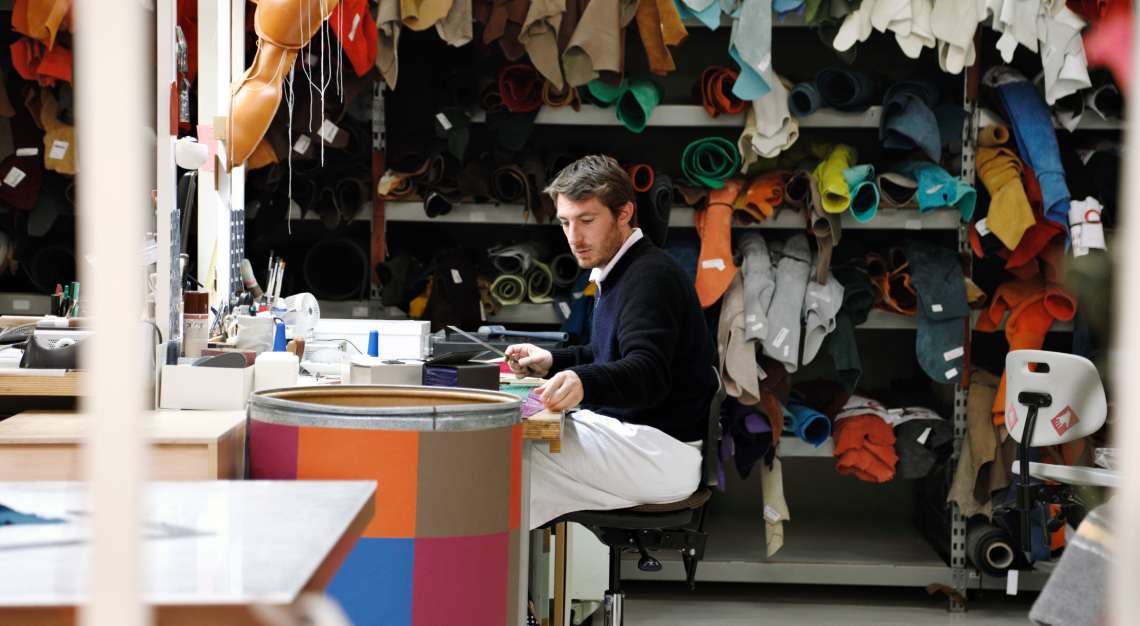
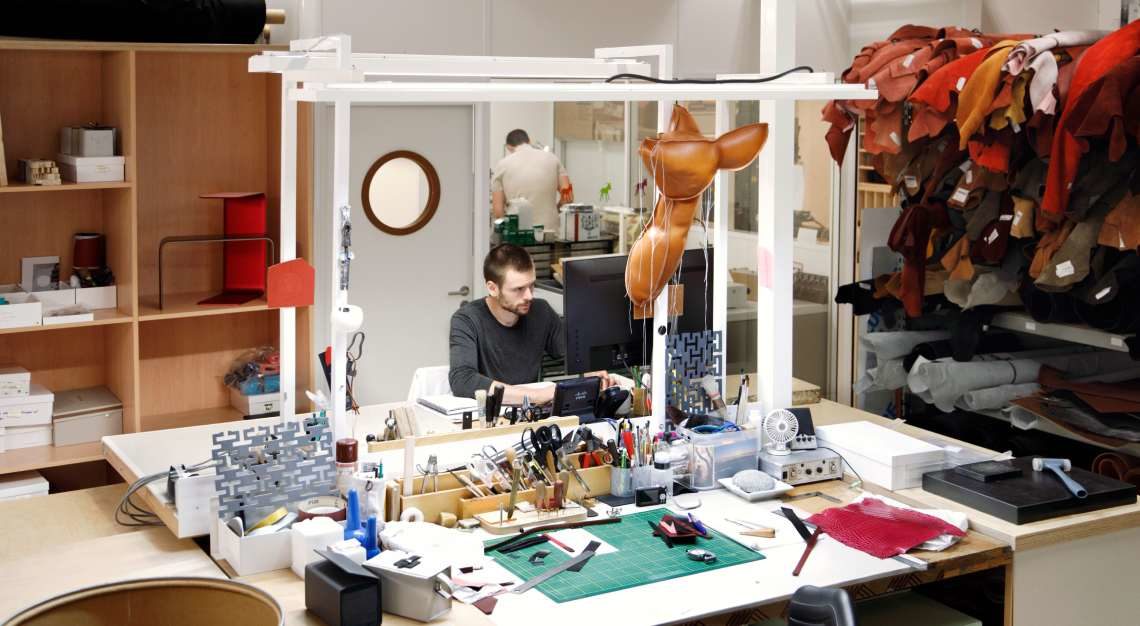
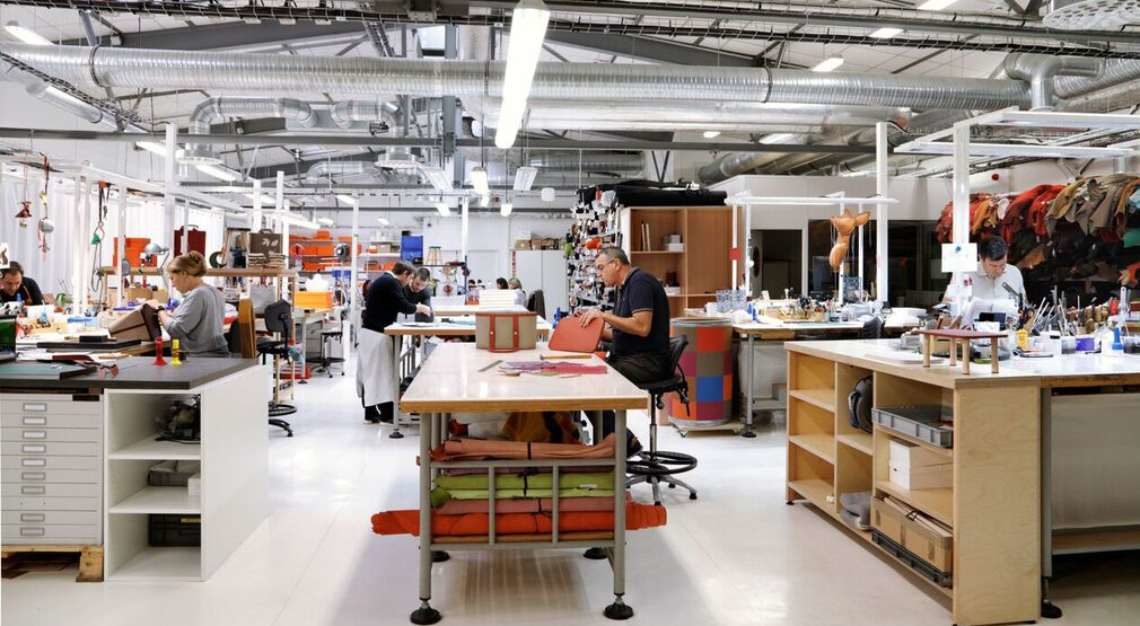
de Virieu muses: “Pascale always says that she knows when things become big and need structure, they can constrain and offer less liberty. She doesn’t want [Petit h] to become too big. We need to be careful – to remain small while maintaining the [flexibility] in how we function. The structure is organised and that’s good. It’s a bit like a garden, you must leave a space where there’s this idea of liberty and things to [grow].”
This freedom means that nothing is too fantastical or out-of-bounds for the workshop: discarded strips of leather become fringed animals that double as decor pieces; leftover silk scarfs become shoelaces and basketball hoops; unwanted glasses and leather swatches become salt shakers. The limit, at Petit h, is only the artist’s imagination.
Says de Virieu: “It’s the idea to find, effectively, a part of our childhood in these subjects. We need to make people dream; we need to surprise them. But it’s not about doing things in a juvenile manner. We surprise by the transformation of materials that we assemble and the creation of new uses. Hermès has always made objects that can be used. And it’s not incompatible with joy, dreams, the pleasure of discovery. It’s part of the values of the maison. Petit h follows this logic.”

Written in the Stars
For all the talk of logic and sensibility, Petit h is, at its heart, an endeavour that celebrates unfettered dreams and untethered imaginations. It’s a project that’s so close to the hearts of all those who are involved in it that it has an emotional bearing on them. For de Virieu, this manifested itself in this year’s scenography at the Hermès boutique on Rue de Sèvres. The theme for the maison this year was Dreams and the team decided to work with universe of chalk. It prompted de Virieu to recall a childhood memory.
He explains: “The most incredible thing about this project is about meeting people I wouldn’t have before. When I was at school, I would pass by a drawing in front of a shop on my way home. It was incredible, enormous and made in chalk. It made me dream and I’d wonder who did it. This was perhaps more than 15 years ago. So when we spoke about working with chalk, I had to find this artist. I checked online, found him and he still lives in Paris. It means a lot to me that this artist was not known by the maison.
“These stories enrich Petit h; the patrimony of the artists, to create new encounters. It’s a big virtue.”

Local Connections
This month, Petit h is hosting an exhibition in Singapore to showcase its treasure trove of whimsical objets. Deriving their inspiration from the vegetation that sprouts all around Singapore, the team at Petit h have created a number of original creations that celebrate the city-state.
And in line with its commitment to artists and designers, the team solicited the expertise of local industrial designer Olivia Lee, who helms her eponymous multi-disciplinary studio, to design the set-up.
The exhibition runs from 22 November to 15 December at the Hermès store at Liat Towers. There will also be workshops available, where you may create something special with your own hands. Sign up here.
